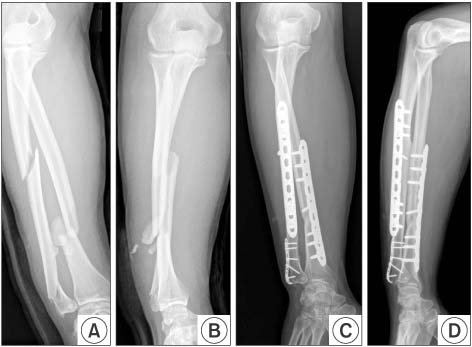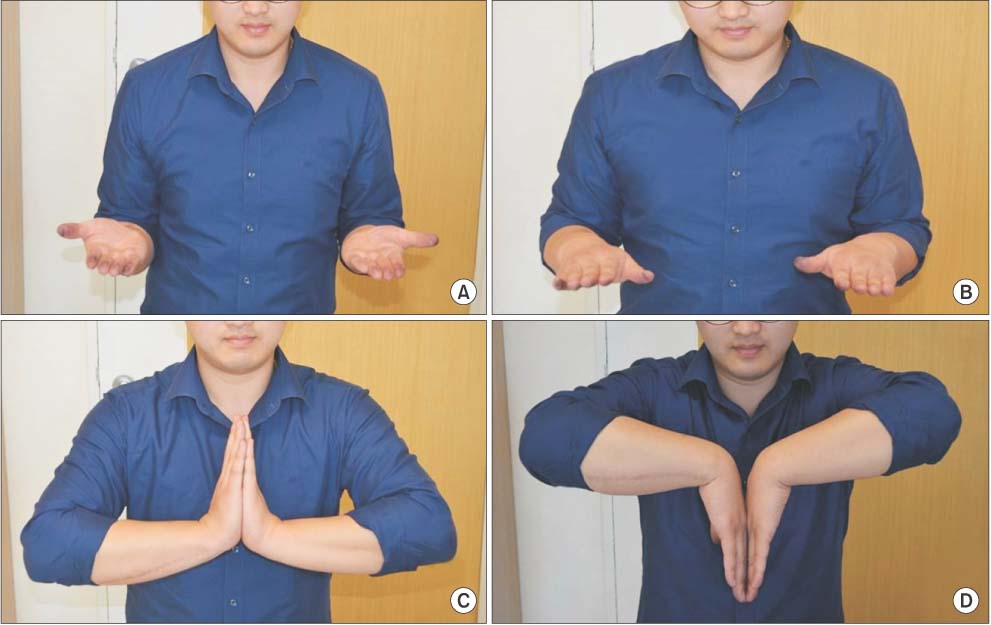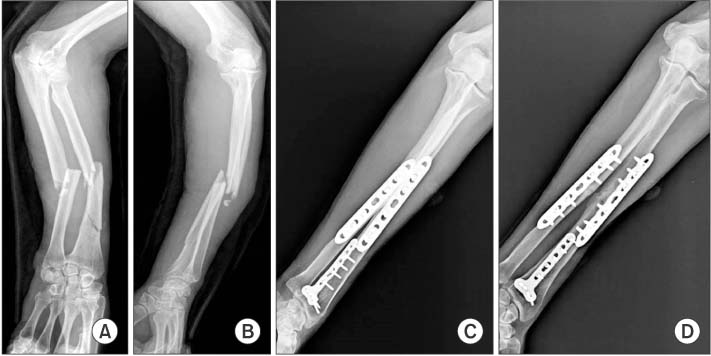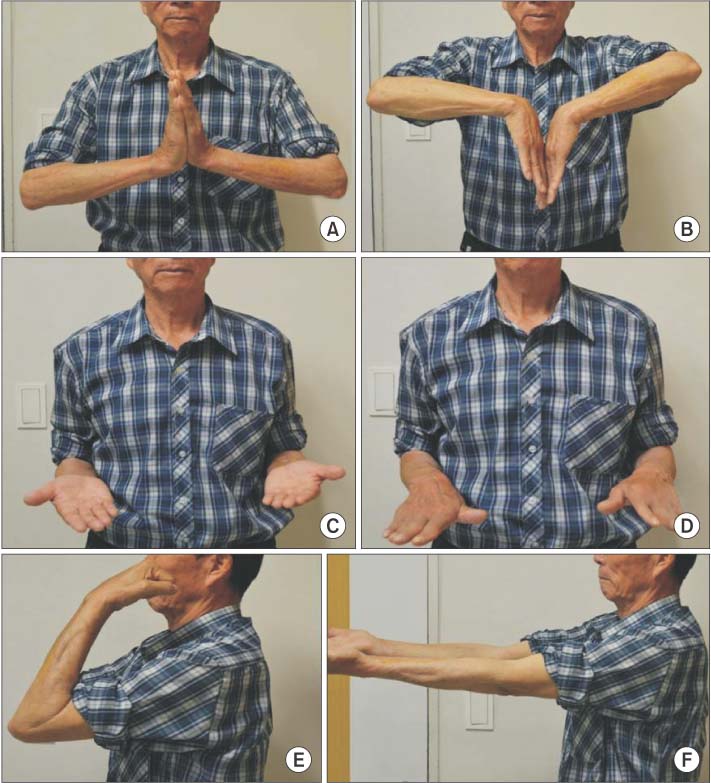Arch Hand Microsurg.
2018 Mar;23(1):46-53. 10.12790/ahm.2018.23.1.46.
Clinical Outcome of Forearm Segmental Fracture after Open Reduction and Plate Fixation
- Affiliations
-
- 1Department of Orthopaedic Surgery, CHA Bundang Medical Center, CHA University School of Medicine, Seongnam, Korea. hsoohong@cha.ac.kr
- KMID: 2412490
- DOI: http://doi.org/10.12790/ahm.2018.23.1.46
Abstract
- PURPOSE
Forearm segmental fractures are occasionally managed by orthopedic surgeon even though the prevalence is much lower than simple fractures. However there are only a few studies dealing the treatment and results of this type of fracture in South Korea. Authors present the clinical results of forearm segmental fractures after open reduction and plate fixation.
METHODS
Medical records and radiographs of 12 patients who were treated with open reduction and internal fixation for forearm segmental fracture were reviewed retrospectively. Fracture union was analyzed by serial radiographs. Clinical results were analyzed with visual analogue scale (VAS), disabilities of the arm, shoulder, and hand (DASH) score, grip strength and range of motion of relevant joints at the final follow-up.
RESULTS
Bone union was achieved in all cases without additional procedure. The average time of bone union was 19.7 weeks. Average VAS was 2.08 and DASH score was 11.85 at the final follow-up. Average grip strength was 22.2 kg (contralateral limb 26.8 kg). Average range of motion of elbow joint was 0°-137°, and wrist flexion, extension, pronation, and supination was 65°, 74°, 84°, and 87°.
CONCLUSION
Authors showed satisfactory results in all cases of forearm segmental fracture. With accurate reduction and stable fixation, favorable result comparable to that of simple fracture can be achieved for complicated forearm segmental fractures.
Keyword
MeSH Terms
Figure
Reference
-
1. Teraa M, Blokhuis TJ, Tang L, Leenen LP. Segmental tibial fractures: an infrequent but demanding injury. Clin Orthop Relat Res. 2013; 471:2790–2796.
Article2. Rommens PM, Coosemans W, Broos PL. The difficult healing of segmental fractures of the tibial shaft. Arch Orthop Trauma Surg. 1989; 108:238–242.
Article3. Thirunarayanan V, Ramprasath DR, Rajan A. Segmental fractures of the forearm-outcome analysis of various management strategies. IOSR J Dent Med Sci. 2015; 14:13–16.4. Matthews LS, Kaufer H, Garver DF, Sonstegard DA. The effect on supination-pronation of angular malalignment of fractures of both bones of the forearm. J Bone Joint Surg Am. 1982; 64:14–17.
Article5. Dumont CE, Thalmann R, Macy JC. The effect of rotational malunion of the radius and the ulna on supination and pronation. J Bone Joint Surg Br. 2002; 84:1070–1074.
Article6. Moss JP, Bynum DK. Diaphyseal fractures of the radius and ulna in adults. Hand Clin. 2007; 23:143–151.
Article7. Droll KP, Perna P, Potter J, Harniman E, Schemitsch EH, McKee MD. Outcomes following plate fixation of fractures of both bones of the forearm in adults. J Bone Joint Surg Am. 2007; 89:2619–2624.
Article8. Kim SB, Heo YM, Yi JW, Lee JB, Lim BG. Shaft fractures of both forearm bones: the outcomes of surgical treatment with plating only and combined plating and intramedullary nailing. Clin Orthop Surg. 2015; 7:282–290.
Article9. Rehman S, Sokunbi G. Intramedullary fixation of forearm fractures. Hand Clin. 2010; 26:391–401.
Article10. Sage FP, Smith H. Medullary fixation of forearm fractures. J Bone Joint Surg Am. 1957; 39-A:91–98.11. Lee YH, Lee SK, Chung MS, Baek GH, Gong HS, Kim KH. Interlocking contoured intramedullary nail fixation for selected diaphyseal fractures of the forearm in adults. J Bone Joint Surg Am. 2008; 90:1891–1898.
Article12. Jones DJ, Henley MB, Schemitsch EH, Tencer AF. A biomechanical comparison of two methods of fixation of fractures of the forearm. J Orthop Trauma. 1995; 9:198–206.
Article13. Kawoosa AA, Dhar SA, Butt MF, Dar GN, Mir MR. The role of composite technique in managing peri implant re-fractures in a case with supracondylar fracture of the femur: a case report. Cases J. 2009; 2:8174.
Article
- Full Text Links
- Actions
-
Cited
- CITED
-
- Close
- Share
- Similar articles
-
- A Clinical Analysis of the Fracture of the Forearm Bone
- A Clinical Result of the Fracture of the Forearm Bone Shaft in Adult
- K-wire Fixation of Unstable Fracture of Both Forearm Bones in children: Comparison with Plate Fixation
- Operative Treatment of Diaphyseal Forearm Fracture in Children
- Operative Treatment of Forearm Fractures in Children





